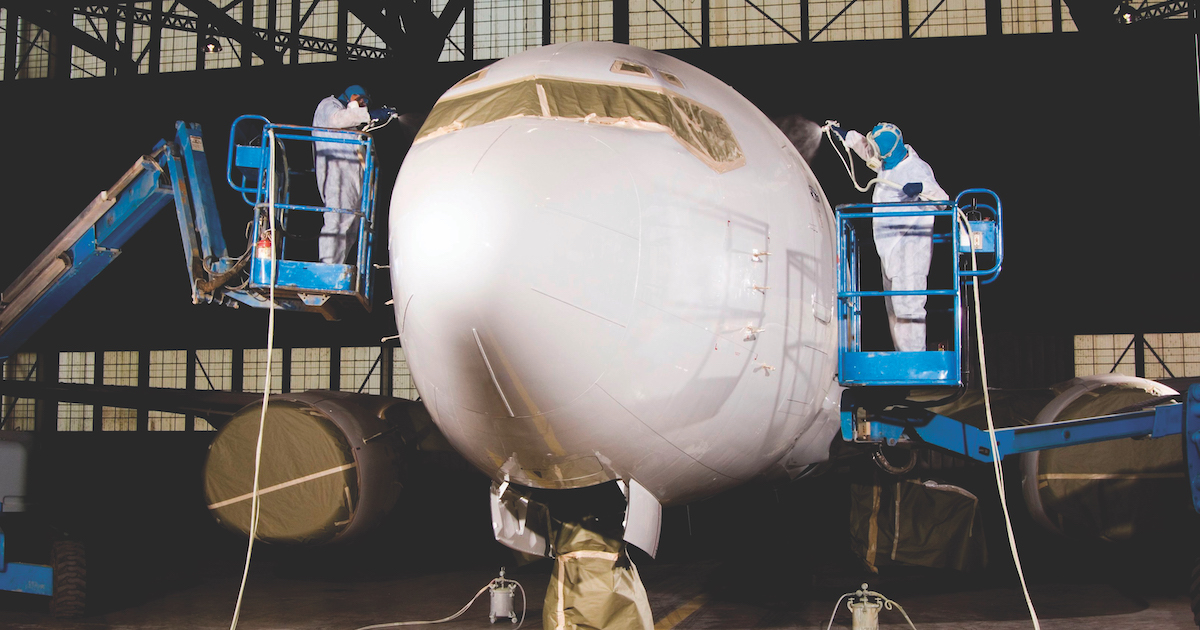
Detect Aircraft Paint Defects Faster with AI-Powered Inspection
Share
The aviation industry is rapidly evolving, and one of the most impactful advancements is utilizing AI technology to streamline processes. When it comes to ensuring the quality and safety of aircraft, detecting paint defects is paramount. This article will delve into how organizations can detect aircraft paint defects faster with AI-powered inspection and why it's a game-changer for tech professionals and enthusiasts alike.
In today's highly competitive aviation market, maintaining aircraft integrity is critical. Traditional inspection methods can be time-consuming and prone to human error. This is where AI-powered inspection steps in, enhancing accuracy and reducing inspection times significantly.
Understanding the Importance of Paint Quality in Aviation
The paint on an aircraft is not just for aesthetics; it serves numerous vital functions, including:
1. Protecting the aircraft from environmental factors
2. Enhancing fuel efficiency through their lightweight properties
3. Offering visibility and potential regulatory compliance.
Given these roles, it's evident that detecting even the tiniest paint defects promptly can have far-reaching benefits, from operational efficiency to ensuring passenger safety.
Why Traditional Methods Fall Short
Conventional methods for inspecting aircraft paint include visual inspections, sometimes aided by ultraviolet lamps or other basic tools. However, these methods often lack precision, especially when it comes to identifying subsurface issues or slight defects that might develop over time.
Moreover, these manual inspections can lead to inconsistencies as human inspectors may miss crucial details due to fatigue or inadequate training. This is a considerable risk for such a vital sector.
AI's Role in Enhancing Paint Inspection
Artificial Intelligence introduces a revolutionary approach to paint inspection. By leveraging algorithms, AI systems can analyze images of the surface more thoroughly than the human eye, detecting even the most subtle anomalies.
- Machine Learning Algorithms - These systems learn from previous inspections, identifying patterns that denote defects.
- Image Processing Techniques - Advanced image processing ensures superior detail capture and analysis.
- Predictive Analytics - AI can also predict when and where a defect is likely to occur based on historical data.
The Advantages of AI-Powered Inspection
Implementing AI for paint inspection comes with various advantages, including:
- Increased Efficiency - On average, AI systems can inspect painted surfaces at a speed 5 to 10 times faster than traditional methods.
- Improved Accuracy - With machine learning, AI systems help in minimizing false positives and negatives, ensuring that no defect goes unnoticed.
- Cost-Savings - Although the upfront cost of implementing AI can be significant, the long-term savings from reduced labor costs and fewer defects far outweigh these expenses.
Case Study: Aerospace Manufacturer's Success
One aerospace manufacturer recently integrated AI-powered inspection technology and noted a 40% decrease in paint defect detection time. By utilizing a machine learning model that analyzed thousands of images, they also achieved an impressive 98% accuracy rate in detection. These results led to faster turnaround times, greater customer satisfaction, and a significant enhancement in their overall production efficiency.
Implementing AI in Your Inspection Processes
For tech professionals looking to incorporate AI into their inspection routines, consider the following steps:
- Assess your current inspection processes to identify bottlenecks and weaknesses.
- Research available AI tools and technologies tailored for the aviation sector.
- Train your team to effectively utilize these modern inspection tools.
- Continuously monitor performance and adapt as needed to ensure optimal efficiency and accuracy.
Future Outlook: The Role of AI in Aviation
As we look ahead, AI in aviation will not only encompass paint inspection but also extend into various operational processes. From predictive maintenance to enhanced avionics, the potential applications are endless.
In conclusion, detecting aircraft paint defects faster with AI-powered inspection is not just a trend; it is a necessity for modern aviation. Tech professionals must stay updated with these advancements to remain competitive and ensure the highest quality standards. Those interested in a deeper dive can check out [how to use aircraft paint remover](https://iottechnologies.io/blogs/aircraft-paint/how-to-use-aircraft-paint-remover), or [the future of aircraft paint inspection](https://iottechnologies.io/blogs/aircraft-paint/the-future-of-aircraft-paint-inspection-ai-and-stroboscopy). This is just the beginning, and the future seems unmissable with these tremendous technologies.

FAQs
- How effective is AI in detecting aircraft paint defects?
- AI is significantly more effective than traditional methods, offering faster and more accurate inspections.
- What are the costs associated with AI inspection technology?
- The initial investment can be high, but the long-term savings from increased efficiency and accuracy make it worthwhile.
- Can AI completely replace human inspectors?
- While AI can enhance inspection processes, human oversight will always play a vital role in quality assurance.
